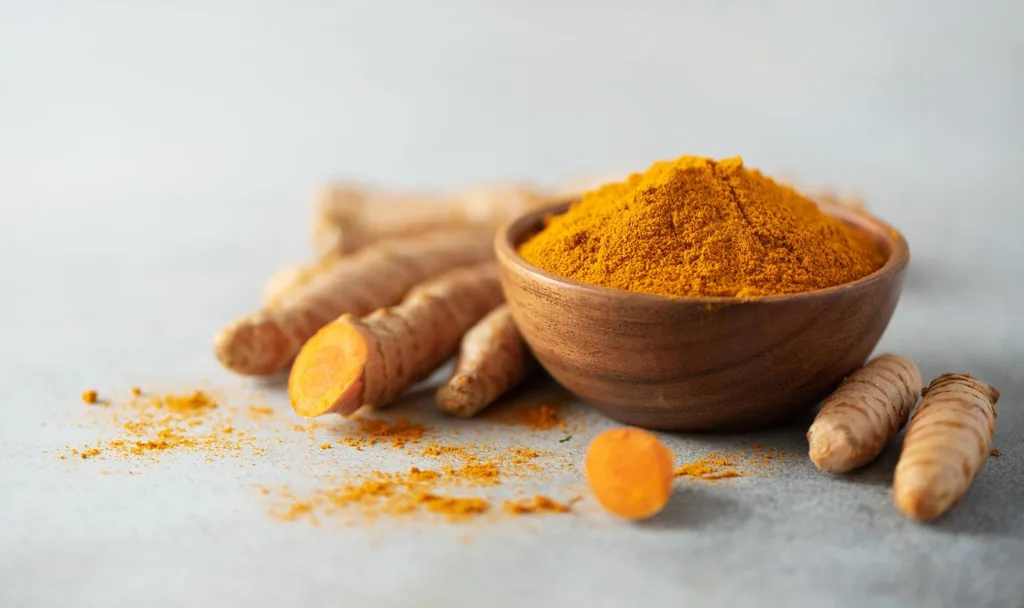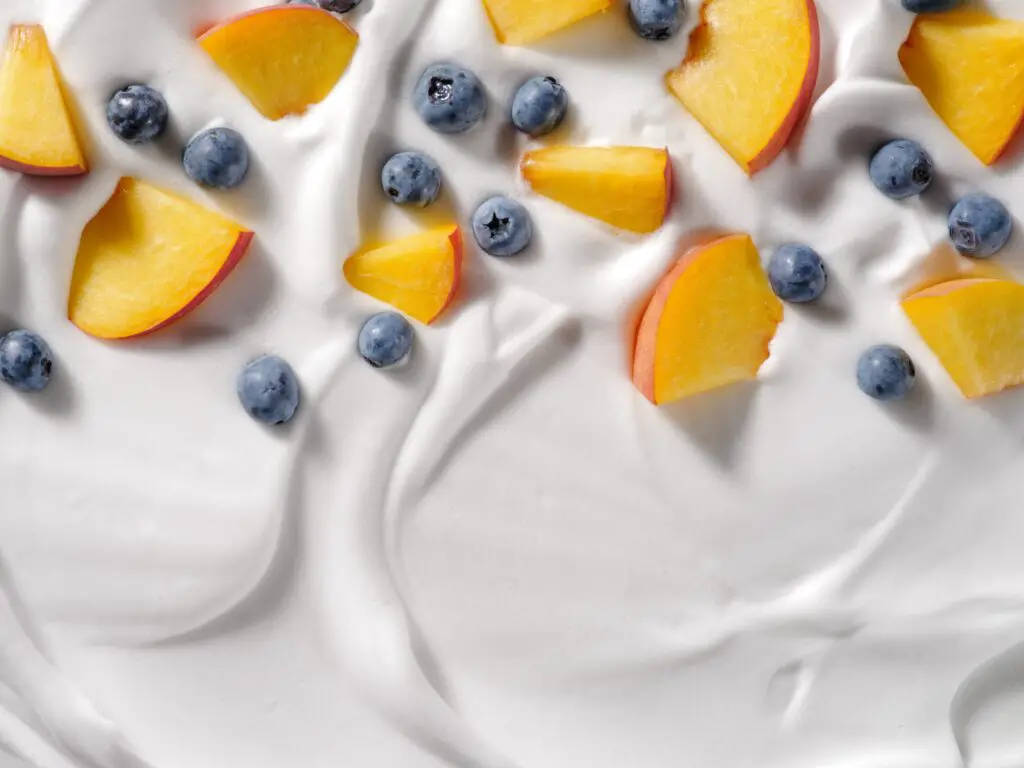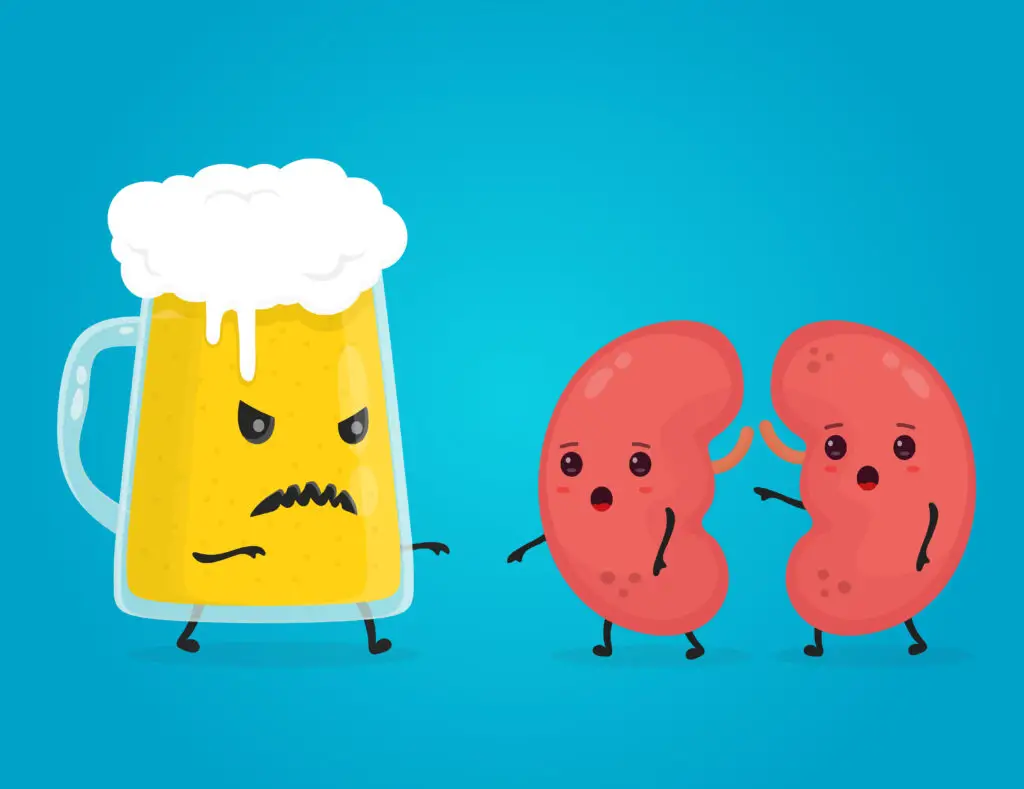Table of Contents
One in three people in the United States have prediabetes, and around 70 percent of them are likely to develop type 2 diabetes (1). However, having prediabetes does not mean you are destined to develop full-blown diabetes.
You can prevent this by following a healthy diet and lifestyle. In this guide, we’ll tell you about the best diet to manage prediabetes. You’ll learn about the best foods to add and avoid to manage prediabetes.
What is prediabetes?
Prediabetes is a condition where blood sugar levels are higher than normal but not high enough to be diagnosed as type 2 diabetes (2).
In this condition, the body’s cells become resistant to insulin, a hormone that regulates blood sugar levels. Consequently, this leads to an imbalance in blood sugar levels.
Normal fasting blood sugar levels are > 99 mg/dL. However, in prediabetes, fasting blood sugar levels range from 100 to 125 mg/dL (3).
Without intervention, prediabetes can develop into type 2 diabetes. Moreover, it can increase the risk of serious health diseases such as stroke and heart disease.
Signs of prediabetes
The signs of prediabetes can be subtle and often go unnoticed. Common indicators include:
- Frequent urination
- Increased thirst
- Blurred vision
- Fatigue
- Slow healing of wounds
Some people may have acanthosis nigricans, which results in dark, thick, velvet-like skin patches, usually in skin folds like the neck, groin, and armpits. Moreover, women may experience polycystic ovary syndrome (PCOS).

Healthy foods for prediabetes
When discussing the best diet for prediabetes, certain foods can help manage the condition. Generally, foods that can maintain blood sugar levels, improve insulin sensitivity, and reduce weight are always best for managing prediabetes and preventing its progression to diabetes.
10 best foods for prediabetes
- Leafy green vegetables
Leafy green vegetables like spinach and kale are rich in nutrients and low in calories, which makes them excellent for blood sugar control. A 2021 study published in the Journal of Nutritional Science showed that high consumption of raw vegetables lowers the risk of type 2 diabetes (4).
The research suggested that consuming at least 400 g/day of vegetables reduces blood sugar levels before/after meals.
Additionally, evidence from the National Health and Nutrition Examination Survey (NHANES) showed that consuming starchy vegetables such as potatoes increases the risk of metabolic syndrome (5).
On the other hand, consuming dark green leafy vegetables improves blood sugar levels and lowers the risk of metabolic syndrome. Metabolic syndrome is a group of diseases, including high cholesterol, high blood pressure, obesity, and high blood sugar (a sign of prediabetes).
- Whole grains
Whole grains are packed with fiber, slowing down sugar digestion and preventing blood sugar levels from rising. A meta-analysis of 4,118 participants revealed that whole-grain consumption significantly reduced fasting glucose and fasting insulin compared to non-whole-grain consumption.
Note that oats were significantly lower on the glycemic index (which measures how much certain foods increase blood sugar levels) (6).
Furthermore, studies show that adding quinoa to your meal improves blood sugar levels and lowers type 2 diabetes risk (7, 8).
Quinoa is rich in fiber, polyphenols, and flavonoids. These compounds protect your body from inflammation and cell damage and reduce the absorption of sugar in the intestine.
- Nuts and seeds
Nuts and seeds are rich in healthy fats and proteins and can stabilize blood sugar levels. A 2022 review suggested that consuming nuts might improve insulin sensitivity and glycemic control (9). Furthermore, nuts promote satiety, which supports weight control. This is also significant in managing prediabetes.
According to a systematic review, consuming pistachios (57 g/day for four months) may improve fasting blood sugar and insulin levels in your body.
The same research found that almonds (60 g/day for four months) and flaxseed (13 g/day for three months) may also improve fasting blood sugar and insulin levels. However, walnuts (56 g/day for six months) didn’t affect blood sugar (10).
- Beans and legumes
Beans and pulses are high in fiber and have a low glycemic index, making them a perfect choice for managing diabetes.
A 2020 study published in the European Journal of Nutrition showed that consuming legumes reduces blood sugar levels after meals (11).
Another study showed that a bean-based diet is more effective in improving blood sugar levels than a white-rice-based diet (12).
- Fatty fish
Fatty fish like salmon and sardines contain high amounts of omega-3 fatty acids.
Omega-3 fatty acids work by increasing cell membrane fluidity, which enhances the function of insulin (13). This means that cells are better equipped to respond to insulin, allowing for more efficient glucose uptake from the bloodstream and use by the body.
Improved insulin sensitivity helps maintain stable blood sugar levels and can prevent diabetes. Besides that, omega-3 fatty acids also help control inflammation.
- Citrus fruits
Citrus fruits, such as oranges and lemons, are also good for individuals with prediabetes due to their vitamin C and fiber content.
The antioxidant properties of vitamin C protect the body from free radicals (compounds that can damage cells).
Moreover, vitamin C regulates blood sugar levels in individuals with type 2 diabetes, which is beneficial for prevention of the diabetes progression (14).
Conversely, the dietary fiber found in citrus fruits slows down the digestion and absorption of sugar and prevents spikes in blood sugar (15).
Recent research has also highlighted the role of eriocitrin, a flavonoid found in lemons, in managing prediabetes (16). Eriocitrin improves blood sugar levels and reduces inflammation, which makes it valuable in the dietary management of prediabetes.
- Avocado
Avocados are a nutrient-dense fruit with beneficial fats that help manage blood sugar levels. This makes avocados an excellent food choice for those looking to manage prediabetes.
Research shows that eating avocado lowers Hb1Ac, a marker of blood glucose in the body (17). A lower Hb1Ac level suggests better blood sugar management over time. Furthermore, avocados have a low carbohydrate content and high fiber content, which can reduce the risk of prediabetes progressing to type 2 diabetes (18).
- Olive oil
Olive oil contains healthy fats that help improve insulin sensitivity and normalize blood sugar (19). Furthermore, it allows the body to fight inflammation and prevent diseases like diabetes.
Research proved that olive oil enriched with oleanolic acid lowers the risk of diabetes in people with prediabetes (20). The oleanolic acid might help regulate blood sugar levels and improve insulin resistance.
- Sweet potatoes
Sweet potatoes are a healthier alternative to regular potatoes due to their lower glycemic index. They are also rich in vitamins and fiber, contributing to their anti-diabetic properties (21).
Different varieties of sweet potatoes, especially the purple ones, are rich in antioxidants like anthocyanins, which lower fasting blood glucose levels and improve insulin sensitivity (22).
- Mushrooms
Mushrooms are low in calories and carbohydrates and may improve blood sugar levels. However, specific studies on mushrooms and prediabetes are limited.
A review suggested that polysaccharides (a type of carbohydrate) found in mushrooms may help lower blood sugar levels (23).
In addition, their high fiber content can help slow glucose absorption, further preventing spikes in blood sugar after meals. This slow-release effect is useful for individuals with prediabetes, as it helps maintain stable blood glucose levels over time.
Meal recommendations for prediabetes
While individual needs may vary, the following evidence-based recommendations are based on the expertise of our team nutritionist.
Adhering to an anti-inflammatory diet, like the Mediterranean diet, which is nutrient-dense with whole foods, is a great way to nourish the body for those with prediabetes concerns.
This way of eating promotes nutrient density, contains foods with low glycemic index such as lentils, beans, and oats, reduces inflammation, and supports the health of the gut microbiome and immune system (pivotal contributors in the development and progression of diabetes) (24). Moreover, this way of eating helps to improve insulin sensitivity and metabolic health.
Focus on whole, nutrient-dense, unprocessed real foods, including a variety of colorful vegetables (leafy greens, mushrooms, broccoli, and peppers) and low-sugar fruits (e.g., raspberries), legumes, nuts, and seeds, along with anti-inflammatory fats such as salmon and olive oil. This dietalso includes moderate amounts of poultry, eggs, and dairy.
Incorporating fermented foods, including kimchi, tempeh, kefir, and miso, is also recommended. Besides that, foods rich in prebiotics, such as bananas, mushrooms, onions, asparagus, oats, artichokes, and dandelion greens are great choices.
Don’t forget about foods rich in probiotics, including yogurt, cottage cheese and sauerkraut.
Other important factors to remember are limiting exposure to environmental toxins, consuming processed foods and refined carbohydrates, and coping with stress through exercise, nature, and adequate sleep.
Consistent, quality sleep and exercise are significant in preventing diabetes. Improving circadian rhythm and sleep has vast effects on health (25).





Top 10 foods to avoid for prediabetes
While considering a healthy diet for prediabetes, you must also consider what not to eat. Here’s a list of foods to avoid with prediabetes:
- Sugary drinks
Beverages such as sodas, fruit juices, and energy drinks are high in sugar, which can increase blood sugar levels, thus increasing the risk of diabetes.
A study showed that people who drank more than two servings of sugar-sweetened beverages per day (> 480 mL/d) had a 1.3 times higher risk of prediabetes than those who drank less than one serving/day (< 240 mL/d) (24).
- Refined carbohydrates
Foods containing refined carbohydrates, like pasta, pastries, and white bread, lack dietary fiber and can lead to blood sugar imbalances (25). Opting for whole-grain alternatives can help maintain blood sugar levels.
- Red and processed meat
Consuming red and processed meat also increases the risk of type 2 diabetes. This is because they contain unhealthy fats and high sodium levels, which can negatively affect your health.
Both fats and sodium contribute to weight gain and cause inflammation, which is a major risk factor for diabetes (26, 27). In addition, red meat disrupts the synthesis of insulin, which results in high blood sugar (28).
- High-fat dairy
Dairy products high in saturated fats can contribute to insulin resistance (when body cells become resistant to the effect of insulin). However, the research data is conflicting (29). Low-fat or fat-free dairy options provide the benefits of dairy without the added risk.
- Flavored yogurt
Flavored yogurt contains high levels of added sugars (30), which can lead to high blood sugar levels and insulin resistance. Instead, choose plain, unsweetened yogurt.
- Fried foods
Fried foods contain high calories and unhealthy fats, which can lead to weight gain (31). Weight gain is a significant risk factor for diabetes. Baking or grilling are healthier cooking methods that can reduce fat intake.
- Candy and sweets
These are often loaded with sugar and can lead to high blood sugar. Natural sweeteners like stevia or fruits can offer sweetness without negatively affecting blood sugar control.
- Alcohol
Alcohol can interfere with blood sugar levels and the body’s ability to manage insulin (32). You can drink it moderately, but be mindful of its impact on your blood sugar.
- High-sodium snacks
Excessive sodium intake can lead to high blood pressure, which is a concern for individuals with prediabetes (33). Opt for low-sodium snacks to help manage blood pressure.
- Tropical fruits
While fruits are part of a healthy diet, some tropical fruits, like mangoes and pineapples, are high in natural sugars. Eat them in limited amounts to avoid blood sugar spikes.





7 healthy snacks for prediabetes you should try at home
According to Patricia Kolesa, MS, RDN, “When it comes to prediabetes and diabetes management, the key nutrients to increase in your diet are protein and fiber. Protein and fiber play a role in satiety and fullness and keeping blood sugar levels down.”
Patricia recommends the following snack ideas that you can easily try at home:
- Cottage cheese: A half cup of whole milk cottage cheese contains 13 grams of protein and you can enjoy it with fruit or whole wheat toast for a balanced snack.
- Blueberries: They contain 80 calories and 4 grams of fiber per serving. You can enjoy blueberries in oatmeal, smoothies, popsicles, fruit salads, and yogurt.
- Greek yogurt: A cup of plain yogurt typically contains 15 grams of protein and can be used in smoothies, yogurt bark, popsicles, and sauces.
- Air-popped popcorn: Packed with fiber and whole grains and a low glycemic index of 55 per serving, popcorn is a great snack option for people with prediabetes.
- Peanut butter: You can enjoy crunchy and creamy peanut butter with no added sugar as a snack. Combine it with yogurt, fruit, or a non-starchy vegetable like celery. It contains eight grams of protein and two grams of fiber.
- Almonds: While many nuts can help with blood sugar management, almonds are a powerhouse, as they contain four grams of fiber and six grams of protein per one ounce serving.
- Hard-boiled eggs: A low-carb food choice, hard-boiled eggs contain six grams of protein and other essential nutrients such as vitamins A, B6, and B12.
Diet for managing prediabetes and high cholesterol
Catherine Rall, a registered dietitian, offers a practical diet plan for individuals managing prediabetes and high cholesterol.


Breakfast options:
- One cup of (cooked) oatmeal with fresh blueberries and almonds
- One high-protein shake or energy bar (Remeber to carefully read the ingredients and aim for a low glycemic index, plenty of fiber, lots of protein, and several vitamins and minerals).
- Multigrain toast, one to two scrambled eggs, and mixed berries
Lunch options:
- Salad with spinach, kale, grilled chicken breast, and quinoa
- Turkey sandwich on multigrain bread with lettuce, tomato, and avocado spread
- Stir-fry with brown rice, tofu, and mixed vegetables
Dinner options:
- Stuffed peppers with brown rice, shredded chicken, and pico de gallo salsa
- Grilled chicken breasts with whole-wheat pasta and tomato sauce
- Baked salmon filets, asparagus spears, and mashed cauliflower
Catherine added, “Diet plans are generally made specifically based on people’s tastes, budgets, and dietary needs.” So, always consult a registered dietician before you start your healthy journey.
Low-carb diet for people with diabetes
A low-carb diet focuses on foods high in protein, healthy fats, and non-starchy vegetables.
Benefits of a low-carb diet
There are many benefits to a low-carb diet, including the following:
- Improved blood sugar control: By limiting carbohydrate intake, a low-carb diet helps to reduce the post-meal rise in blood sugar levels, which helps manage diabetes (34).
- Weight management: A low-carb diet can also help with weight loss, which is beneficial since excess weight is a risk factor for developing type 2 diabetes (35).
- Reduced insulin resistance: A low-carb diet may also improve insulin sensitivity, allowing cells to use glucose for energy. This lowers blood sugar levels and prevents diabetes (36).
How to implement a low-carb diet
- Choose low-carb foods: Consume non-starchy vegetables, healthy fats (like avocados, nuts, and seeds), and lean proteins (such as chicken, fish, and tofu).
- Avoid high-carb foods: Limit or avoid foods high in refined sugars and starches, such as bread, pasta, rice, and sugary snacks.
- Monitor carb intake: Track daily carbohydrate intake to ensure it aligns with your individual health goals. Some low-carb diets recommend 20 to 50 grams of carbohydrates daily, while others may allow up to 130 grams.
Popular low-carb diets
- Ketogenic diet: This very low-carb, high-fat diet puts your body in a metabolic state called ketosis. In ketosis, your body burns fat instead of glucose to produce energy. Studies suggest the keto diet is effective for people with diabetes (37, 38).
- Paleo diet: The Paleo diet mimics the eating patterns of our ancestors. It focuses on whole foods and eliminates grains and processed foods, naturally reducing carb intake.
- Low-carb Mediterranean diet: This is a variation of the traditional Mediterranean diet that reduces carbohydrate intake while emphasizing foods like olive oil, fish, nuts, and vegetables (39). This also supports the reduction of inflammation and enrichment of the microbiome, integral preventive factors for diabetes (40).
Because these diets are restrictive and may cause a deficiency of certain vitamins, their safety needs to be evaluated for long-term use (40). Always consult your doctor before you decide to follow any diet.





Ways to prevent prediabetes progressing into type 2 diabetes
Adopting a healthy lifestyle is crucial to preventing prediabetes from progressing to type 2 diabetes. Here are some effective strategies:
- Manage your weight: Shed a few pounds if you are overweight. This can lower the risk of developing type 2 diabetes.
- Exercise regularly: Brisk walking or aerobic exercise might help you manage prediabetes.
- Eat a balanced diet: Plenty of fruits, vegetables, whole grains, lean proteins, and healthy fats help support healthy blood sugar.
- Limit alcohol consumption: Alcohol can worsen prediabetes.
- Quit smoking: Smoking is also a risk factor for developing type 2 diabetes.
- Reduce stress: Use different stress-reducing methods, like meditation and yoga. Higher stress levels can lead to insulin resistance.
- Monitor your blood sugar levels regularly: Sometimes, your doctor may recommend medication to prevent type 2 diabetes.
What is the fastest way to fix prediabetes?
The fastest way to address prediabetes involves making immediate lifestyle changes. This includes:
– Adopting a healthy diet
– Increasing physical activity
– Losing excess weight
– Quitting smoking and drinking alcohol
– Improving sleep and reduce stress
– Balancing circadian rhythm
These changes can help improve insulin sensitivity and lower blood sugar levels.
Can drinking water lower blood sugar?
Yes, along with other factors, drinking water can lower prediabetes. Staying hydrated (drinking at least eight cups daily) helps control blood sugar and insulin levels. Plus, it is a healthy substitute for sugary beverages.
Is lemon water bad for prediabetes?
No, lemon water is not bad for prediabetes. In fact, it’s healthy due to its low sugar and high fiber content. It can be a good addition to your diet and keep you hydrated.
How long does it take to reverse prediabetes?
The time it takes to reverse prediabetes varies from person to person. Depending on individual health factors and the extent of lifestyle changes, it can take anywhere from a few weeks to several months or even years.
Is oatmeal good for prediabetes?
Yes, oatmeal can be a good option for individuals with prediabetes. It is high in fiber, which can help regulate blood sugar levels. However, opt for less processed oats, like steel-cut or rolled oats, and to be mindful of portion sizes and added sugars. Processed oatmeal can raise blood sugar levels.
Summary
Finding the best diet for prediabetes involves personalizing your eating plan to include nutrient-dense, low-glycemic foods that help maintain stable blood sugar levels. To reverse prediabetes, follow a balanced diet rich in fiber from various vegetables and healthy fats. Remember that consistency and moderation are key to managing prediabetes effectively.

















Comments
0